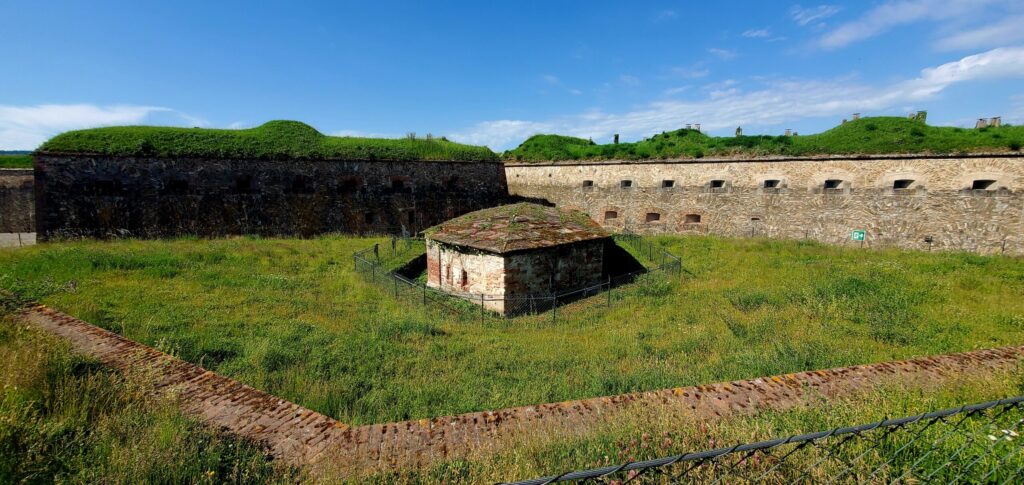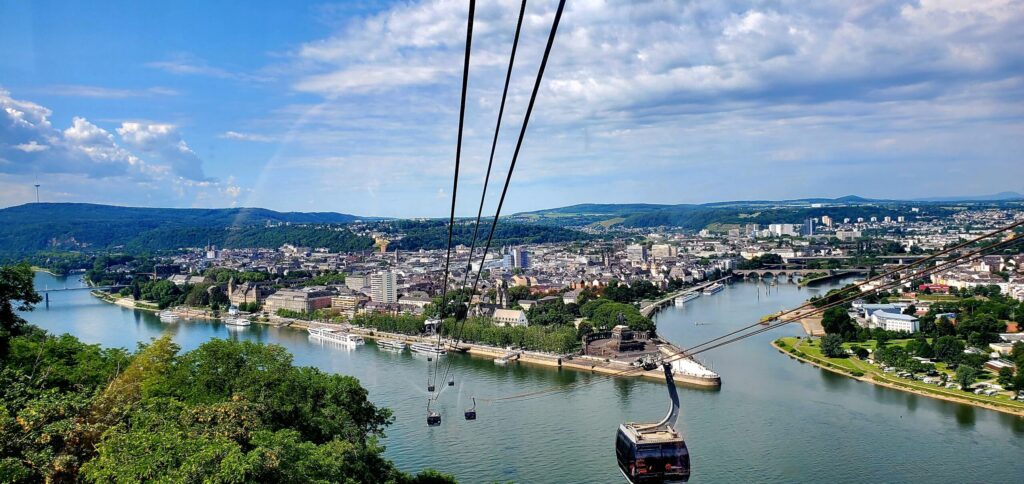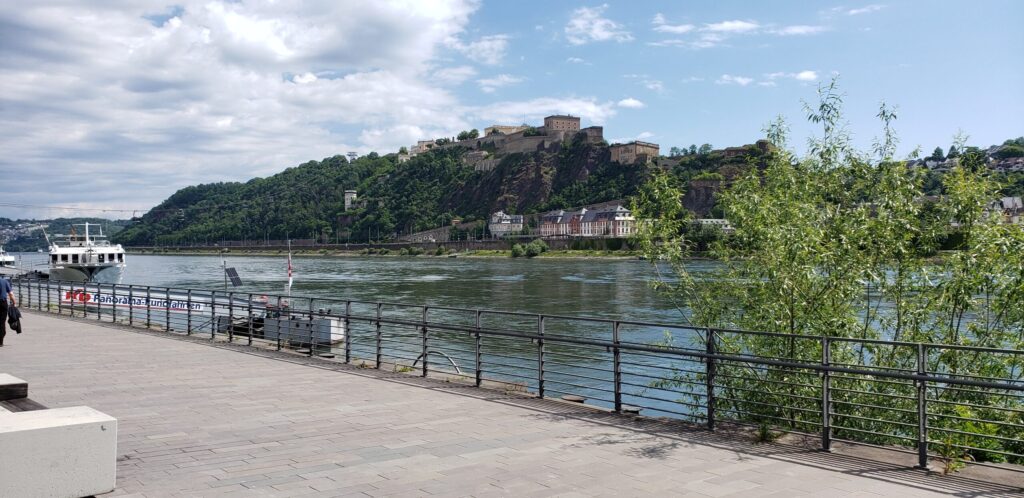Ehrenbreitstein Fortress
Travel Tales Excerpt – Christmas Curry in Koblenz
The fortress itself was a vast maze of thick walls, deep bunkers, and kill zones. Its design was to protect the riverway below and protect its soldiers. The mountain upon which it sat towered over Koblenz. Its walls were mostly brick with large iron doors. A single road led to the fortress. Its predecessor had fallen after a yearlong siege, so the Prussian government concentrated on defense and the ability to store supplies that could keep the defender well-fed and armed.
The infirmary was nothing special because the main fortress was not expected to see battle. It was supported by a network of smaller fortresses and castles that lined the banks of the Rhine and Moselle. The infirmary had room for 200 beds, and most were unoccupied. There was a mild influenza spreading across Europe and the US, but it was not related to the larger pandemic that arose in 1918. However, there were a few patients who displayed influenza symptoms in November 1917. The chief doctor was a man in his seventies named Dr. Schenkendorf, whose gate and posture made him look like he was in his eighties. He barely glanced at the transfer orders, mumbled a welcome, and directed her to store her belongings in the nursing quarters. His German was easy to understand, and that bolstered her confidence.
– End Excerpt
The Ehrenbreitstein Fortress across the river from Koblenz, Germany, was my first site in the area. It has a commanding view of the Rhine and Moselle rivers and provides a complete view of Koblenz and its notable features. Our tour group was transported there by bus from the river ship. At the fort, tour guides dressed in period attire, and they theatrically conducted the tour. They start our tour by informing us that we have traveled back to the first days of the fort and are conducting a military inspection.




